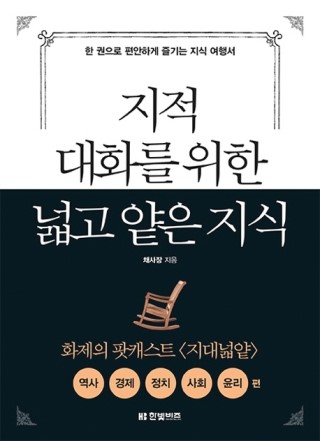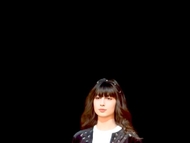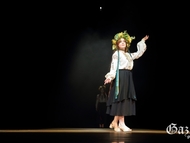
●Author: Chae Sa-jang
●Genre: Humanities
●Published: 2015
●Length: 376 pages
In the 21st century, we can easily get information. If we want to get some information, we can easily find it with a smart phone. Because it’s so easy to get, we have a habit of forgetting information easily. People have conversations about their favorite things or something for work. Before we talk to each other, we need to choose a topic and prepare our thoughts. If you don’t, you can have a hard time participating in the conversation and understanding it. There are complicated topics many people feel are difficult like philosophy, science, art and religion. To study them, we often don’t know where to start. Chae Sa-jang tries to give us a starting point with his new book Wide and Slight Data of Cerebral Conversations.
Chae Sa-jang read one book each day for three years, which means he read around 1,000 books in that period. He has tried to find and read difficult books like Das Kapital by Karl Marx. He discovered that he could understand various fields like philosophy, science, art and religion, and find connections to other difficult or uninteresting books. This is why his book became a big issue only 10 days after being published.
This book is organized like the popular TV program, Pod Cast. It includes three major philosophies: absolutism, relativism, and skepticism. First, absolutism emphasizes that right and wrong are determined by absolute standards. Relativism, the opposite of absolutism, refers to the belief that right and wrong are different from one society to another. Skepticism contends that all human perspectives are subjective and supports such a claim through doubting the possibility of knowledge, its justifications or logical arguments, and truth or facts.
For example, the ancient Greek philosopher Plato is a representative of Absolutism. He insists that there is a world made of eternal perfect ideas. And these ideas are the ultimate reference points for all objects we observe in the physical world. They are more real than the physical objects you see in the world. But his student Aristotle is a relativist who is more interested in the real world. Protagoras is a skeptic who relies on the idea of the relativity of all things. The things only exist in their relation to the subject, the human, and there is no sense in addressing their own isolated content or meaning. Truth is exactly what the individual considers it to be. In science, Ptolemy claimed the Ptolemaic theory is a typical absolutist. In art, the Renaissance is the representative absolutism because in this period all people pursue rational arts. The top artist is Leonardo da Vinci. On the other hand, art relativism emphasizes a sentimental aspect in the Baroque period. Its representative work is The Three Graces by Rubens. Skepticism in modern times has appeared to challenge new things not the conflict between rational and emotional assumptions. That is an abstract art which is an art form that represents the essential character of things instead of natural forms as they are.
This book has great summaries to make it easy to understand. I hope people can have profound conversations after reading this book. Chae Sa-jang hopes people who read his book can easily approach humanistic and philosophic conversations with valuable knowledge.








